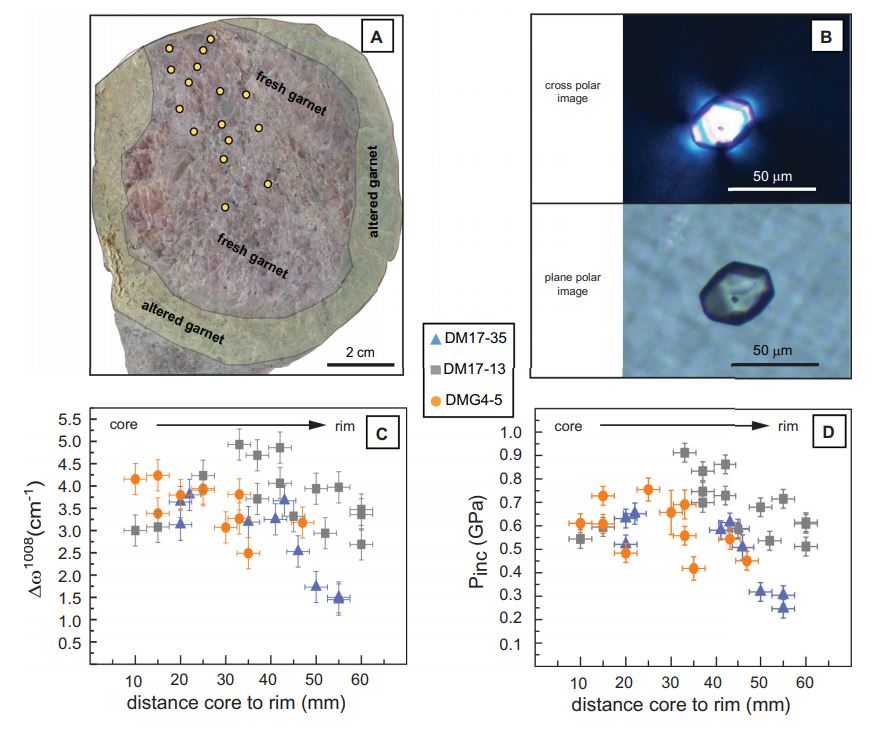Zircon in garnet elastic Barometry: problems and perspectives
In the “boutique outcrop” Dora Maira Massif, Western Alps the ultrahigh-pressure (UHP) whiteschists of the Brossasco-Isasca unit provides a natural laboratory in which to compare results from classical pressure (P)–temperature (T) determinations through thermodynamic modelling with the emerging field of elastic thermobarometry. In his new article Nicola Campomenosi presents analyzes and discusses in great detail the data collected during his PhD.
Phase equilibria and chemical composition of three garnet megablasts coupled with Zr-in-rutile thermometry of inclusions constrain garnet growth within a narrow P–T range at 3–3.5 GPa and 675–720 °C. On the other hand, the zircon-in-garnet host-inclusion system combined with Zr-in-rutile thermometry would suggest inclusion entrapment conditions below 1.5 GPa and 650 °C that are inconsistent with the thermodynamic modelling and the occurrence of coesite as inclusion in the garnet rims. The observed distribution of inclusion pressures cannot be explained by either zircon metamictization, or by the presence of fluids in the inclusions. Comparison of the measured inclusion strains with numerical simulations shows that post-entrapment plastic relaxation of garnet from metamorphic peak conditions down to 0.5 GPa and 600–650 °C, on the retrograde path, best explains the measured inclusion pressures and their disagreement with the results of phase equilibria modelling. This study suggests that the zircon-garnet couple is more reliable at relatively low temperatures (< 600 °C), where entrapment conditions are well preserved but chemical equilibration might be sluggish. On the other hand, thermodynamic modelling appears to be better suited for higher temperatures where rock-scale equilibrium can be achieved more easily but the local plasticity of the host-inclusion system might prevent the preservation of the signal of peak metamorphic conditions in the stress state of inclusions. Currently, we cannot define a precise threshold temperature for resetting of inclusion pressures. However, the application of both chemical and elastic thermobarometry allows a more detailed interpretation of metamorphic P–T paths.

